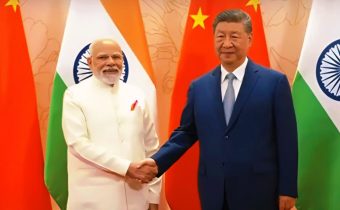India and China, two of the world’s fastest‑growing economies and strategic rivals, have taken a decisive step toward redefining their bilateral engagement. In a series of high‑level talks held during the Shanghai Cooperation Organization summit in Tianjin, leaders reaffirmed their commitment to a technology partnership that prioritizes cybersecurity, data exchange, and innovation cooperation. The agreement, which builds on years of incremental progress, signals a shift from competition to collaboration, especially in the burgeoning fields of artificial intelligence, 5G, and quantum computing. By aligning regulatory frameworks and sharing best practices, the India China tech partnership aims to create a secure digital ecosystem that benefits both nations and the global technology community.
Background and Context
The India China tech partnership is rooted in a complex history of trade tensions, border disputes, and evolving global power dynamics. Since the 1990s, both countries have aggressively expanded their technology sectors, yet concerns over intellectual property, data sovereignty, and cyber espionage have repeatedly strained relations. The 2020s saw a gradual thaw as both governments recognized that mutual technological growth could serve as a stabilizing force in the region. The Shanghai Cooperation Organization summit provided a neutral platform where leaders could openly discuss shared challenges and opportunities, setting the stage for a formalized partnership that balances national security with economic advancement.
Key Developments
During the summit, several landmark agreements were signed, marking significant milestones in the India China tech partnership:
- Cybersecurity Framework: A joint task force will be established to monitor cross‑border cyber threats, share threat intelligence, and develop rapid response protocols.
- Data Exchange Protocol: Mutual recognition of data protection standards will simplify cross‑border data flows while ensuring compliance with each country’s privacy regulations.
- Artificial Intelligence Collaboration: Joint research labs will focus on AI ethics, machine learning algorithms, and the development of AI‑driven public services.
- 5G Infrastructure Cooperation: Shared investment in 5G network equipment manufacturing, with a focus on securing supply chains against geopolitical risks.
- Quantum Computing Initiative: A bilateral roadmap to advance quantum research, including shared access to quantum simulators and joint patent filings.
- Regulatory Harmonization: Alignment of standards for emerging technologies such as blockchain, autonomous vehicles, and edge computing.
- Educational Exchange: Scholarship programs for students and researchers to study in each other’s institutions, fostering cross‑cultural technical expertise.
- Startup Incubation: Creation of a cross‑border incubator to support tech startups with funding, mentorship, and market access.
These developments collectively strengthen the India China tech partnership, fostering a collaborative environment while safeguarding national interests.
Impact Analysis
The immediate effects of the India China tech partnership are multifaceted. Economically, joint ventures and shared R&D initiatives are expected to boost GDP growth in both nations by creating new markets for high‑tech products. Politically, the partnership serves as a confidence‑building measure, reducing the likelihood of cyber conflicts and providing a framework for diplomatic engagement on contested issues. Technologically, the alignment of standards will accelerate the deployment of 5G and AI solutions across borders, benefiting consumers and businesses alike. However, challenges remain, such as balancing trade liberalization with safeguarding intellectual property and ensuring that cybersecurity protocols are robust enough to resist sophisticated state‑sponsored attacks.
Expert Insights and Tips
Industry analysts suggest that the India China tech partnership will reshape the global tech supply chain. Dr. Maya Sharma, a cybersecurity professor at IIT Delhi, notes that “the collaborative threat‑intel sharing platform is a game‑changer for protecting critical infrastructure.” Meanwhile, Mr. Li Wei, chief technology officer at Huawei, emphasizes the importance of “mutual respect for data sovereignty” to sustain long‑term trust. For businesses looking to leverage this partnership, experts advise:
- Engage Early: Participate in joint R&D programs to secure a foothold in emerging markets.
- Prioritize Compliance: Align product designs with both countries’ regulatory frameworks to avoid compliance gaps.
- Invest in Talent: Tap into the expanded talent pool through dual‑country scholarship and exchange programs.
- Monitor Cyber Risks: Implement robust security measures aligned with the new cybersecurity framework.
- Leverage Standardization: Adopt shared standards early to benefit from reduced certification times and cost efficiencies.
Looking Ahead
The India China tech partnership is poised to evolve beyond the initial agreements. Future milestones include the establishment of a joint AI ethics council, a shared quantum computing resource pool, and a comprehensive roadmap for AI‑driven public services. Both governments have indicated a willingness to explore collaboration in space technology, nanotechnology, and biotechnology, potentially expanding the partnership into new frontier domains. The success of this partnership will hinge on sustained political will, transparent governance mechanisms, and continuous engagement from the private sector. As the global technology landscape shifts, the India China tech partnership could serve as a model for other nations seeking to balance competition with collaboration in the digital age.
Conclusion: The India China tech partnership marks a pivotal moment in bilateral relations, blending strategic cooperation with mutual economic interests. By addressing cybersecurity, standardization, and innovation, the two powers are carving a path toward a more secure and prosperous digital future. The outcomes of this partnership will not only reshape domestic tech ecosystems but also set a precedent for global collaboration in the face of complex geopolitical challenges.


















